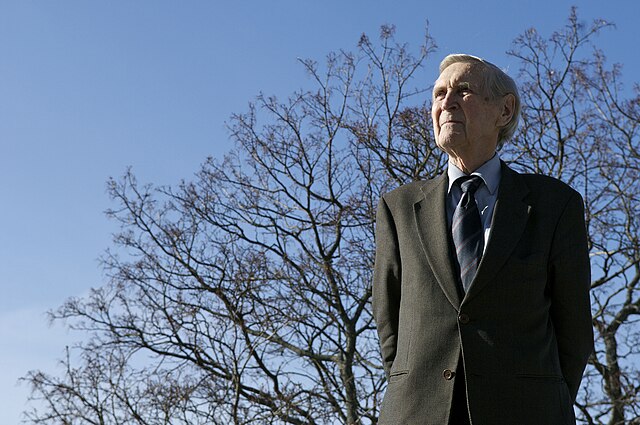
Gunnar Sønsteby. Photo credit: Arnephoto.
I was planning to post something about Occupied Norway today anyway (you’ll find it below), but it happens that one of Norway’s last living Resistance heroes died today. He was named Gunnar Sønsteby, and he was the most decorated man in Norwegian history. If you followed my advice and watched the movie, “Max Manus,” Sønsteby was one of the characters portrayed in it. But he could have carried a movie all on his own.
OK, here’s a strange story.
A while back, I posted a piece I called Survival Story. It concerned a strange character I discovered in a Norwegian-language book I read about my ancestral community, Kvalavåg, in Norway. During World War II, one of the German occupation officers who served there was a Jew named Konrad Grünbaum, who ended up in the Wehrmacht due to a clerical error.
One of the commenters on that post was an actual descendent of Grünbaum’s. He contacted me through Facebook and asked if I had any further information. I didn’t, but promised to check with my relatives over there.
And they came through, past all hope. As it happened, an article on Grünbaum had been published in the Haugesunds Avis newspaper back in 1986. The article was illustrated by a photo of part of Kvalavåg which Grünbaum took during the war. Because of that, my relatives kept a couple copies, and they were happy to send one to me. I have forwarded it to my correspondent, and it’s on its way to him by mail.
My translation of the article can be read below:
THE GERMAN IN KVALAVÅG
By Ida Nydstrøm (July 23, 1986)
Konrad Grünbaum, a Jew by birth, is now 70 years old and a retired city council member in Fürth. He lived in that city before the war as well. He was a metal worker in a factory, and an active member of the SAJ: The Socialist Labor Youth. Continue reading Concerning Norway and World War II


